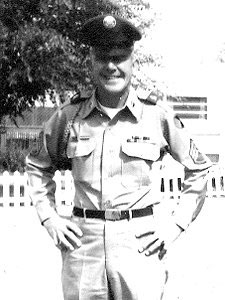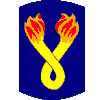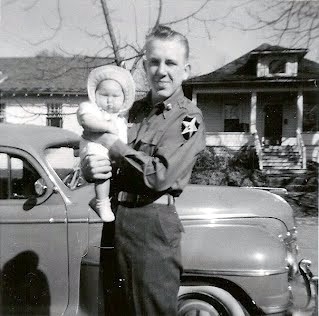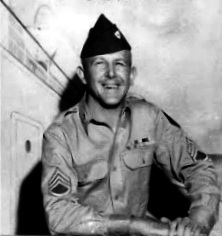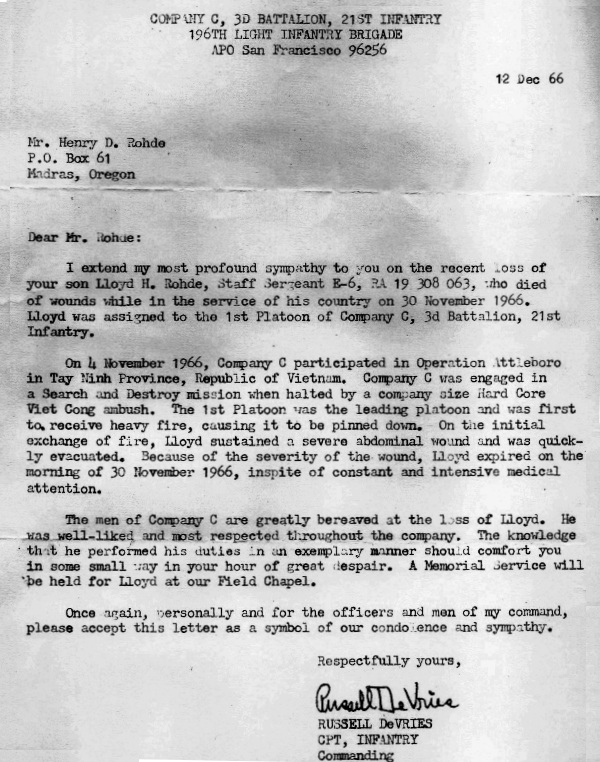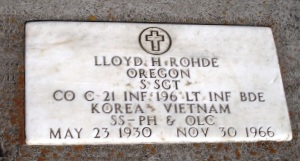What began as a small-scale, limited-objective combat training exercise for the 196th Light Infantry Brigade (LIB) on
September 14, 1966, unexpectedly developed into a widespread, protracted, multi-organizational battle before it
ended on November 24, 1966. The final troop list included elements of the U.S. 1st and 25th divisions, the 173rd Airborne
Brigade, several Army of the Republic of Vietnam (ARVN) battalions, a Special Forces-trained "Mike Force" and U.S. air
support--22,000 Allied troops in all. It was the largest U.S. operation of the war to that date. On November 6, 1966,
the corps-level II Field Force Vietnam took control of the operation until the final action on November 25, 1966.
This first combat operation of the 196th LIB--code-named "Attleboro" after the Massachusetts town. The plan called for
a series of battalion-size, airmobile operations extending north, east and south of Tay Ninh from Trai Bi to Suoi Da to
Dau Tieng (Tri Tam).
The 196th's combat operations during Attleboro fell into two distinct phases. The first, from September 14 to
October 31, 1966, was a series of probing maneuvers resulting in only light and sporadic contact with the VC, but
huge amounts of rice and other stores were uncovered and captured. The three infantry battalions assigned to the
brigade included the 2d Battalion, 1st Infantry; the 3d Battalion, 21st Infantry; and the 4th Battalion, 31st Infantry.
An artillery battalion, the 3d Battalion, 82nd Artillery, equipped with 105mm guns, was also assigned to the brigade.
All three infantry battalions of the 196th participated in one way or another.
Phase II of Attleboro began November 1 and ended November 5, 1966.
On the morning of 4 November, the brigade commander ordered Company C, 3d Battalion, 21st Infantry under Captain
Russell DeVries to move his unit by helicopter from the base camp at Tay Ninh. C/3-21 Infantry made the move in two
stages, first going to the air strip at Dau Tieng and then on an LZ in the vicinity of 1-27 Infantry. The lead element
of the company linked up with the Wolfhounds about 1445, and the entire company was on the ground by 1515 hours, when Major Meloy
ordered the unit to join the attack on the right flank of A/1-27 Infantry.
Meloy enveloped and captured the VC base camp with Captain Cole's A/1-27 Infantry and C/3-21 Infantry under Captain DeVries.
This had been accomplished by the time the two companies from 2-1 Infantry arrived about 1800. Meloy incorporated the two
new units into his night defensive position. His command, now grown to five rifle companies, spent a relatively quiet night,
with a few minor enemy probes but no real attacks.
On the morning of November 4, the assistant brigade operations officer showed up at Major Meloy's command post
with a map detailing the continuation of the operation. The two companies from 2-1 Infantry were to move overland
about three kilometers and resume their original attack on Axis Red--due east of the area where C/1-27 Infantry had
fought the previous day. Meloy was ordered to attack northeast toward an arbitrary location on LTL 19. There
he would link up with his Company B, which would attack to the west from the blocking position it occupied.
Meloy wanted to avoid any friendly-fire incidents in the thick, forbidding terrain. He gave Major Stevens and the two 2-1
Infantry companies a two-hour start before he set his two Wolfhound rifle companies in motion to the northeast.
"We ran into a VC concrete bunker complex. It was the only time I saw such fortifications in Vietnam, " said Meloy.
"The positions were manned by the 273d VC Regiment, and they immediately tried to outflank us. The fire was so heavy that
everyone in the battalion command group except one radio operator was wounded."
Meloy met the flanking maneuver by placing his units into a horseshoe-shaped defensive position, "With my A Company
on the right from 12 o'clock to 3. A platoon from Company C covered from 3 to 4. On the left, C/3-21 Infantry was
deployed from 12 to 9, and the other two platoons from Company C were positioned from 9 to 7."
Phase III of the Operation was from 6 Nov to 25 November under the control of II Field Force. The 21st continued
operations in the area.
At the end of Operation Attleboro, the 25th Infantry Division stated they had lost 44 Killed in Action, 342 Wounded by
Hostile Action (WHA), and 4 died from wounds days after they were wounded; the 196th LIB lost 53 KIA, 399 WHA, and none died from
wounds during the operation period ending 25 November. Records today show that one soldier,
SSG Lloyd Hans Rohde,
a member of C Company, 3rd Battalion, 21st Infantry was severely wounded on the contact of 4 November 1966 when his company
was moving to support the extraction of the companies from the two battalions of the 27th Infantry. He survived until
November 30, 1966 when he succumbed to his abdominal wounds. As a result of his actions on 4 November, SSG Rohde was awarded
the Silver Star.
Another soldier who was wounded in action on November 5, 1966 while being extracted from the area as part of C Company, 2nd Battalion,
27th Infantry was PFC Thomas Joseph Conners, also known as "Ozzie".
He passed away on May 27, 2000 as a result of complications attributed directly to his wounds received in Vietnam. His name
was added to the Wall in Washington, D.C. in May of 2005. Read the story about "Ozzie" Conners' participation in
Operation Attelboro here.
A total of 8 men were killed in action from C Company, 3rd Battalion, 21st Infantry, 196th Light Infantry Brigade during
Operation Attleboro. They were:



